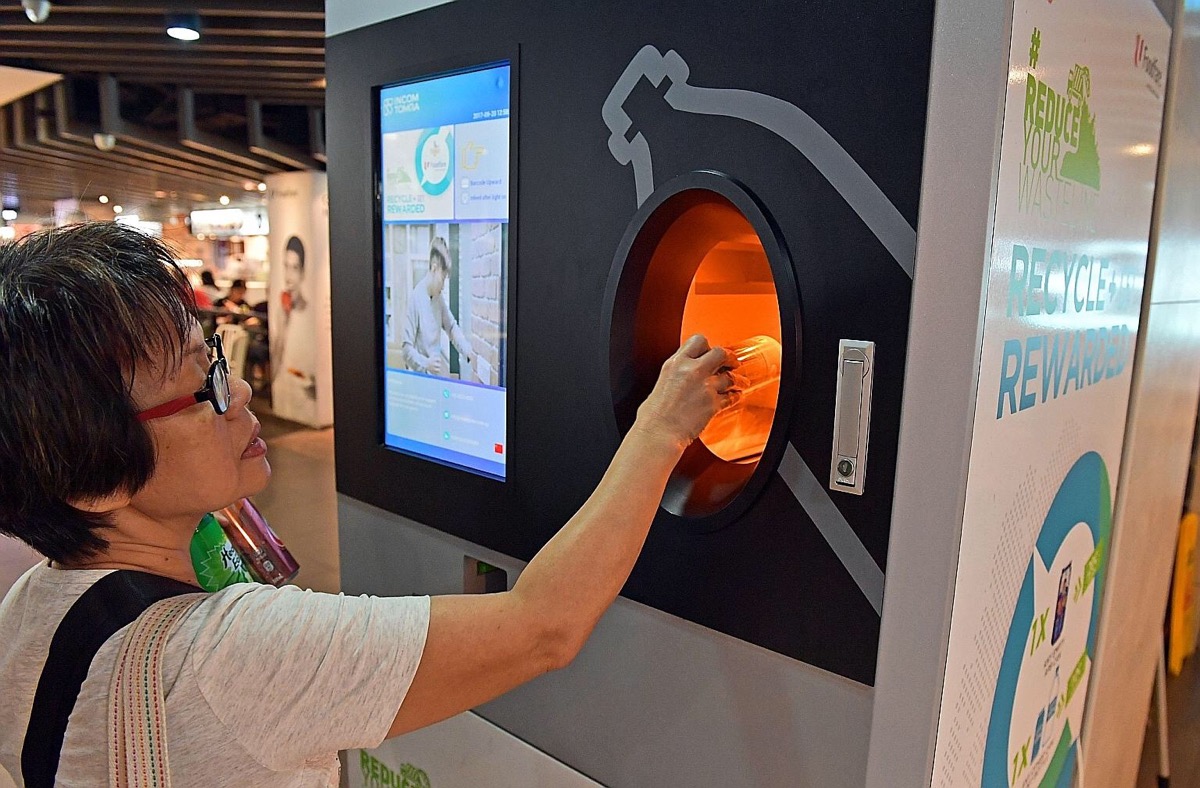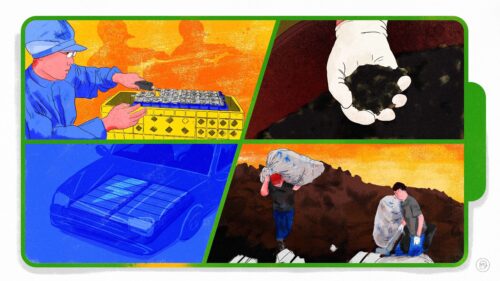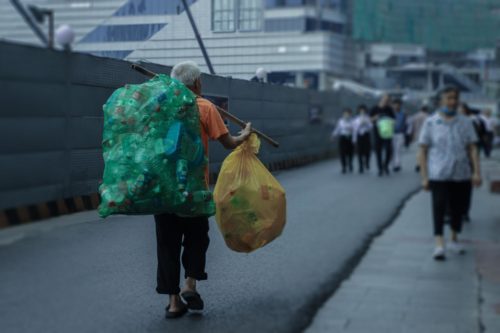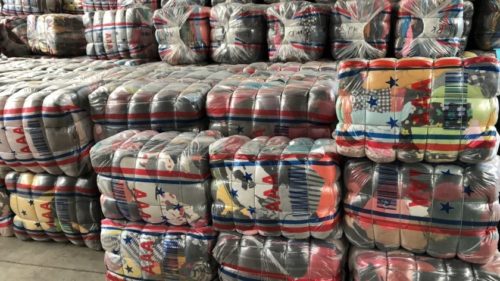How China’s ‘foreign waste’ ban might spur its domestic recycling program
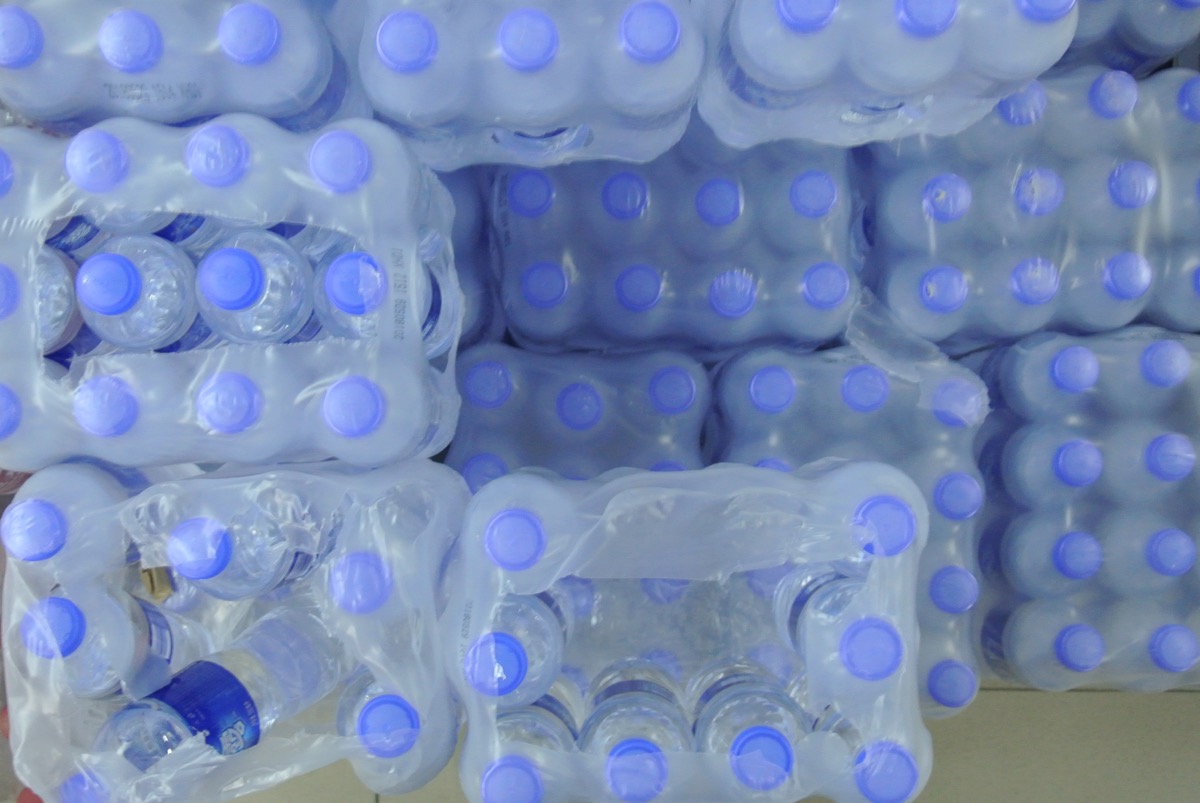
China’s import ban on recyclables and waste has other countries scrambling. But the effects are being felt back home, too — hopefully for the better.
Chuming Li balances two plastic bottles of juice on a carton of fresh durian as he browses the crowded shelves of his university’s campus grocery store.
“I buy anywhere between 10 to 20 bottles of juice and water per week,” says Li, a 23-year-old computer science PhD candidate at Tsinghua University in Beijing’s Haidian District. “I’ve been buying bottled drinks since I was a young kid.”
Li’s affinity for bottled drink reflects a trend in China that has environmentalists nervous and the government scrambling to respond. In the world’s most populous country, widespread consumption of bottled beverages has created concerns about the environmental effects of unrecycled plastic. China became the world leader in 2013 for plastic water bottle consumption at over 73 billion bottles per year, due in part to the country’s rapid urbanization, concern over safe drinking water, and intensive marketing by companies such as Coca Cola and Pepsi.
After decades as the world’s recycling dumping ground, China now must deal with its mounting domestic recycling. Experts say that the country’s informal recycling collection system is no match for the rapid rise in consumption. The central government and local officials responded over the past decade with efforts to increase public awareness of the need for recycling and to curb Chinese companies’ recycling of imported materials, but results have been mixed.
Of the plastics and other recyclables that do make it to domestic recycling centers, the majority are brought there by scavengers, many of them elderly pensioners who operate in a gray legal area to manually sort waste and recycling found in garbage cans or apartment communities, despite laws against picking through trash. The scavengers are paid by weight for each material type, whether it be plastic, paper, or foam packaging.
In the Xiwangzhuang community in Beijing’s Haidian District, 53-year-old Zhu Qingyi parks his rusty cart, painted with his cell phone number in white, on an inner street of the compound and waits for residents to come to him or to call him to pick up recycling from their buildings.
Zhu has collected recyclables — bottles, plastics, cans — for about 10 years, and is one of the city’s estimated 170,000 scavengers. In a good month, Zhu says he takes home 2,000 to 3,000 yuan ($300 to $450), while that number dips to 1,000 rmb ($150) in bad months (forcing him to take side jobs).
“There’s been a change in culture,” Zhu says as he interrupts himself to chit-chat with older residents of the community. “Back in the day, people were more frugal, so they saved up their recyclables in order to collect money. Now, young people just throw it away.”
But a recent piece of national legislation has Zhu seeing better days ahead, particularly for himself.
On January 1 of this year, China banned the import of 24 recyclable materials, including plastic, paper, and e-waste such as batteries. In April it expanded the ban to include dozens more materials, including steel waste. China was once the world’s largest importer of foreign recyclable materials, but that has all changed, seemingly overnight. One British waste manager told the New York Times, “The rest of the world is thinking, ‘What can we do?’ It’s tough times.”
Recycling experts claim that the ban will improve China’s international image while increasing domestic prices and opening up the domestic recycling system for improvement.
The fallout experienced by exporting nations such as the U.S. and the UK was immediate and significant, even before the ban was implemented.
The reason for such a drastic shift in policy?
“The problem of foreign garbage is loathed by everyone in China,” said Guo Jing, who is in charge of international cooperation at the Chinese Ministry of Environmental Protection, as quoted by China Daily. Recycling experts claim that the ban will improve China’s international image while increasing domestic prices and opening up the domestic recycling system for improvement.
The current market price of recycled PET — the plastic found in water bottles — is 6,500 to 6,800 yuan per metric ton, compared to 5,500 to 6,000 yuan a year ago, according to Philip Marshall, director of PCI Wood Mackenzie, an analyst firm that specializes in the chemical and polymers industries.
“The value of the waste bottle has risen and potentially will continue to rise in the medium term,” Marshall said by email. “Will this mean the ‘man in the street’ gets more for waste bottles? Potentially, but it will be small. It is the recycle collectors and producers which will see improved margins in that timeframe.
“But it is likely to encourage more recyclers.”
Recyclers like Zhu, who says he’s seen the price of recyclables increase by two-thirds since the recycling import ban — though it’s too soon to say if the price increase will tempt ordinary people to recycle more of their waste.
“China is looking to make the system more efficient and have less ‘scavengers,’ but overall the current local system provides a good recycle rate,” Marshall said. “There are drives to make people more aware (of recycling) and also not to have ‘scavengers’ as a profession…there is a drive toward systemization and reducing general ‘plastics pollution’ by having more systemized collection.”
Greenpeace East Asia campaigner Liu Hua applauded the ban for cutting off millions of tons of materials that would enter China each year. China’s General Administration of Customs reported that March plastic imports hit zero.
Hua also cited its potential to increase demand for domestic waste as a “powerful incentive” to improve the country’s recycling system, including through implementation of household waste sorting and classification programs for food scraps, recyclable materials, and trash that minimize and streamline the sorting work done by scavengers and recycling companies.
“The next step is for local governments to introduce more comprehensive waste classification systems and to increase recycling rates,” Hua said in an email.
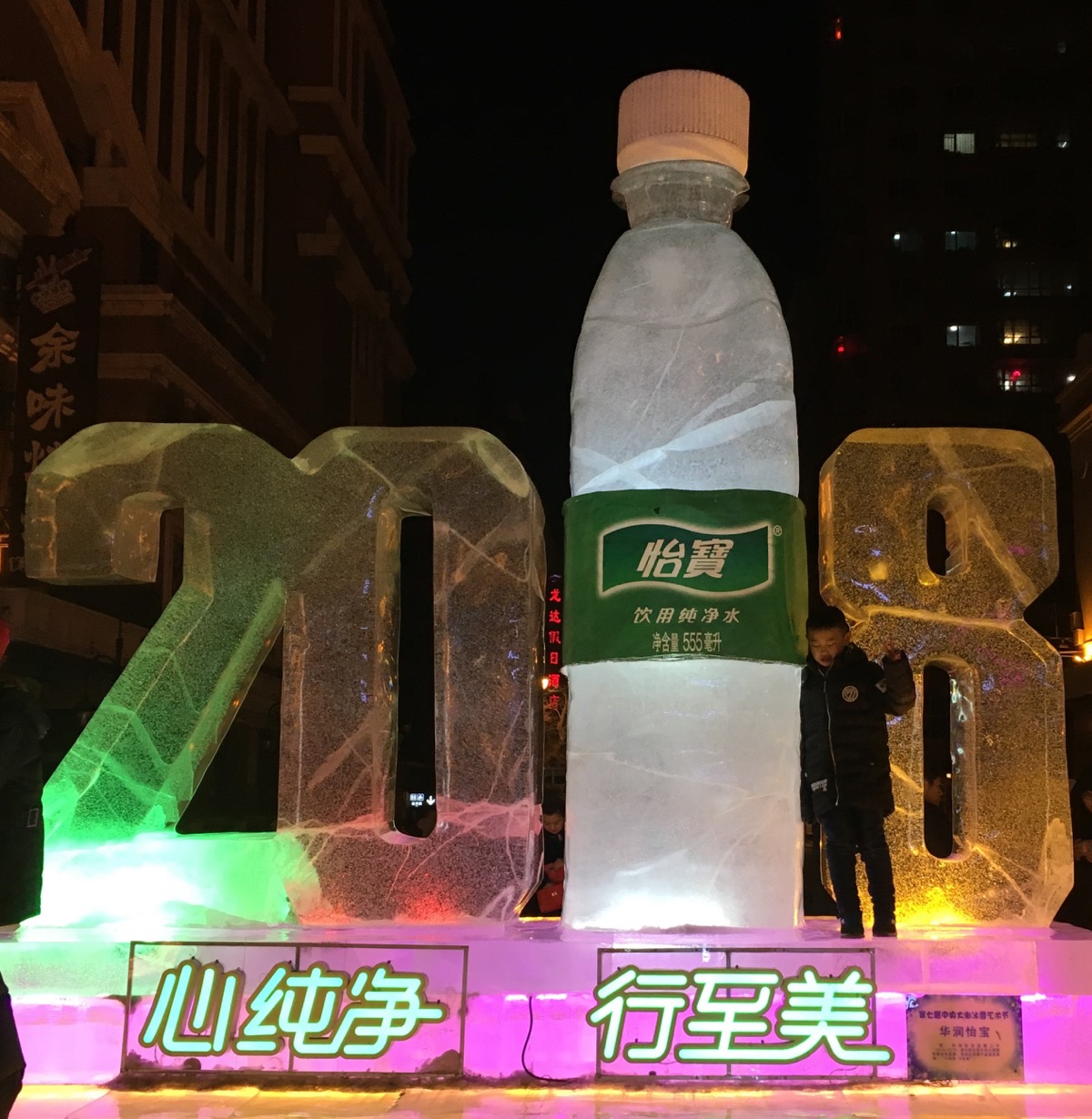
China’s large municipalities have understood the need for recycling awareness for a while. There were public campaigns encouraging recycling in the late 1990s. But the public, generally speaking, has been slow to catch up. For instance, while Shanghai and Beijing have trash bins with separate sides for recyclables and non-recyclables, many residents remain unsure of how to categorize their waste.
Environmental activists, corporate leaders, and waste experts question whether the Chinese government can change people’s behavior, manage domestic consumption, and minimize environmental damage.
In 2013, China overtook the U.S. as the largest consumer of bottled water by volume, according to Bloomberg. Since then, the country has seen a huge increase in domestic plastic bottle consumption, from 23.14 million tons in 2014 to an estimated 500 million tons this year. The consumption of PET plastic in mineral water bottles alone could reach over 2.6 metric tons by 2020 in China, according to some experts.
As little as 23 percent of all potentially recyclable materials in China were recycled in 2013, according to the State Council’s National Development and Reform Commission, but modest progress has been made. Experts estimate the total is closer to 30 percent in 2017, compared to the 45 percent of municipal waste recycled in Germany and 35 percent in the U.S.
A 2014 study published in the journal Waste Management on Beijing’s current recycling system recommended that to make the system whole, “informal and formal sectors should work together,” and that scavengers should be formally employed by existing small community waste-buying depots.
Chinese recycling companies, local governments, and entrepreneurs are now exploring ways to morph China’s haphazard domestic recycling into a successful business model, and to bring recycling awareness into daily public life.
One private company, Beijing INCOM Resources Recovery Resourcing, is both collecting and processing plastic bottles through the 7,000 Reverse Vending Machines (RVM) the company currently operates within China.
Consumers drop their bottles through slots in the machines, mainly located in subway stations in cities such as Beijing, Shanghai, and Chongqing, and then the machine sends money to their mobile payment accounts such as WeChat, or they are given coupons for restaurants such as KFC, based on the weight of each bottle.
“In Beijing, we set more than 5,000 units all over the city, we can recycle about 30 million bottles every year,” Steven Sun, INCOM regional sales manager, said by email. “We use our reverse logistics platform to make sure that the bottles we collect are recycled in the right way.”
Li, the bottled beverage-drinking student, seems to think that recycling awareness and management will improve.
“When I was young, recycling wasn’t popular, but I see that now it’s becoming a trend,” he says. “I see a good future for it in China.”
